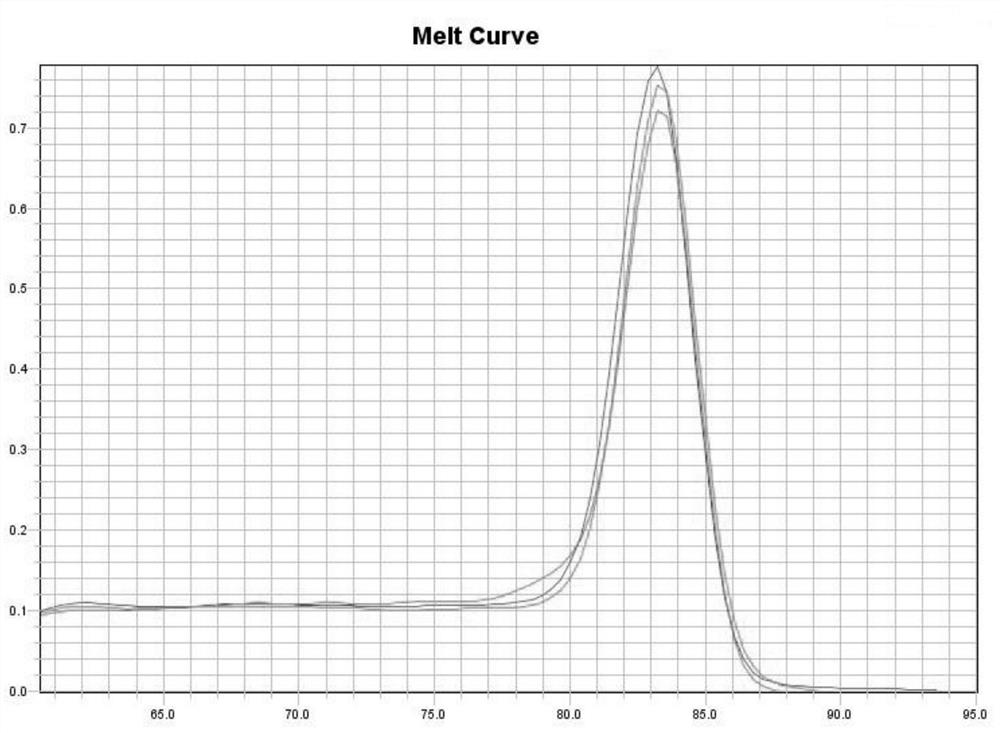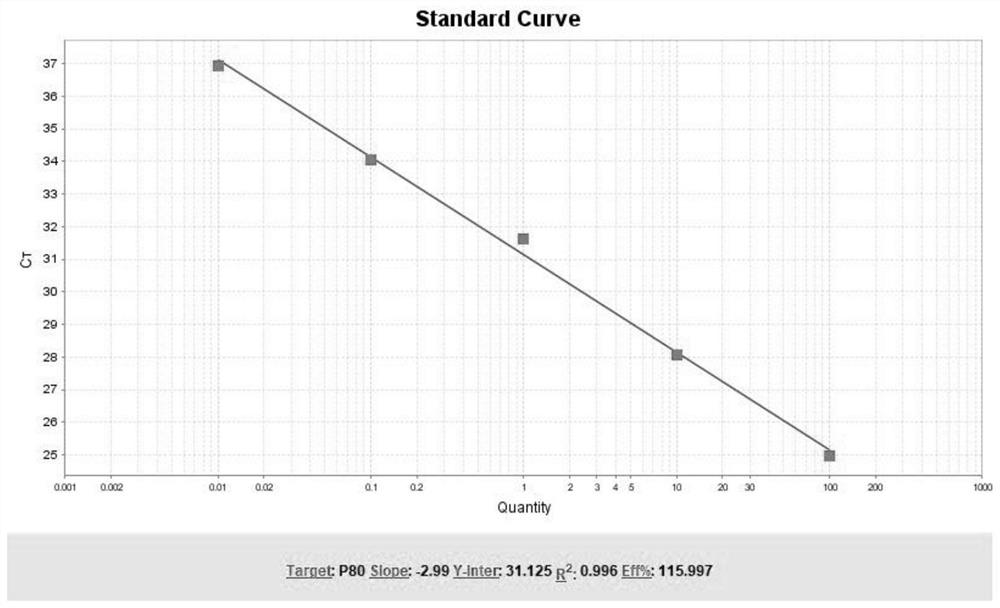Human thyroid cancer gene fusion kit and detection method
A technology for gene fusion and thyroid cancer, applied in biochemical equipment and methods, microbiological measurement/inspection, etc., can solve the problems of less information on fusion gene detection, limited clinical use, and increased experimental operation procedures, so as to improve the accuracy of detection The effect of reducing the risk of opening tubes/pipetting
- Summary
- Abstract
- Description
- Claims
- Application Information
AI Technical Summary
Problems solved by technology
Method used
Image
Examples
Embodiment 1
[0041] Example 1 The primer sequence for amplifying the mutation sites of thyroid cancer-related genes was synthesized by Shanghai Sangong.
[0042] Taking CCDC6-RET as an example, the RNA primer design principle of the present invention will be described in detail below. Such as figure 1 As shown, with the position of the breakpoint as the boundary, the exon 1 of the 5' end CCDC6 gene is fused with the exon 12 of the 3' RET gene, so the upstream primer is designed on the exon 1 of the CCDC6 gene, and the downstream primer is designed on the RET gene On exon 12 of the gene; the RET wild-type upstream primer was designed on exon 11, and the downstream was consistent with the downstream primer of the fusion gene.
[0043] (1) RNA-specific primers, the primer sequences of which are shown in Table 2:
[0044] Table 2 fusion gene and its primer sequence
[0045] Gene Primer CCDC6-E1-F 5'-GAACGACATGGCTACGATCCGACTTCAGGAGGAGAACCGCGAC-3' CCDC6-E2-F 5'-GAACG...
Embodiment 2
[0054] Example 2: Sample pretreatment and nucleic acid extraction
[0055] Qualified professionals take samples with a puncture needle, and the samples include puncture tissue samples greater than 1 mg. After the biopsy is completed, infiltrate the tissue completely in RNA preservation solution as soon as possible. Samples were stored at -20°C prior to sample shipment.
[0056] Use the tissue cell RNA extraction kit (spin column method) and refer to the instructions of the kit to extract the RNA in the sample.
[0057] 1. Mechanical tissue sample homogenization:
[0058] Put the sample in a suitable glass tube or centrifuge tube, add 350 μL Buffer RL and DTT mixed lysate (100:1) lysate, insert the probe into the lysate, and homogenize intermittently at high speed, each time for 15-20 seconds until the sample Homogenize completely.
[0059] 2. Extraction of nucleic acid after homogenization
[0060] About 350 μL of the homogenized sample was centrifuged at 14,000 rpm for 3...
Embodiment 3
[0071] Embodiment 3: Construction of library
[0072] The library construction process of this kit is as follows:
[0073] (1) RNA reverse transcription and the first round of PCR amplification (amplification of the target region)
[0074] Using Vazyme's reverse transcriptase and its KAPA multi-reconstruction library mix respectively, the following system was prepared:
[0075]
[0076] Set the following conditions on the PCR instrument for the reaction:
[0077]
[0078] (2) The first round of PCR product purification
[0079] 1) After the programmed reaction, the sample was briefly centrifuged, and the sample was added to 20 μl of nucleic acid-free water, then transferred to 14 μl (0.7×) XP magnetic beads, vortexed and incubated at room temperature for 2 min;
[0080] 2) Place the sample on a magnetic stand. After the solution is clarified, transfer the supernatant to 10 μl (0.5×) XP magnetic beads, vortex and mix, and incubate at room temperature for 5 minutes;
...
PUM
 Login to View More
Login to View More Abstract
Description
Claims
Application Information
 Login to View More
Login to View More - R&D
- Intellectual Property
- Life Sciences
- Materials
- Tech Scout
- Unparalleled Data Quality
- Higher Quality Content
- 60% Fewer Hallucinations
Browse by: Latest US Patents, China's latest patents, Technical Efficacy Thesaurus, Application Domain, Technology Topic, Popular Technical Reports.
© 2025 PatSnap. All rights reserved.Legal|Privacy policy|Modern Slavery Act Transparency Statement|Sitemap|About US| Contact US: help@patsnap.com



